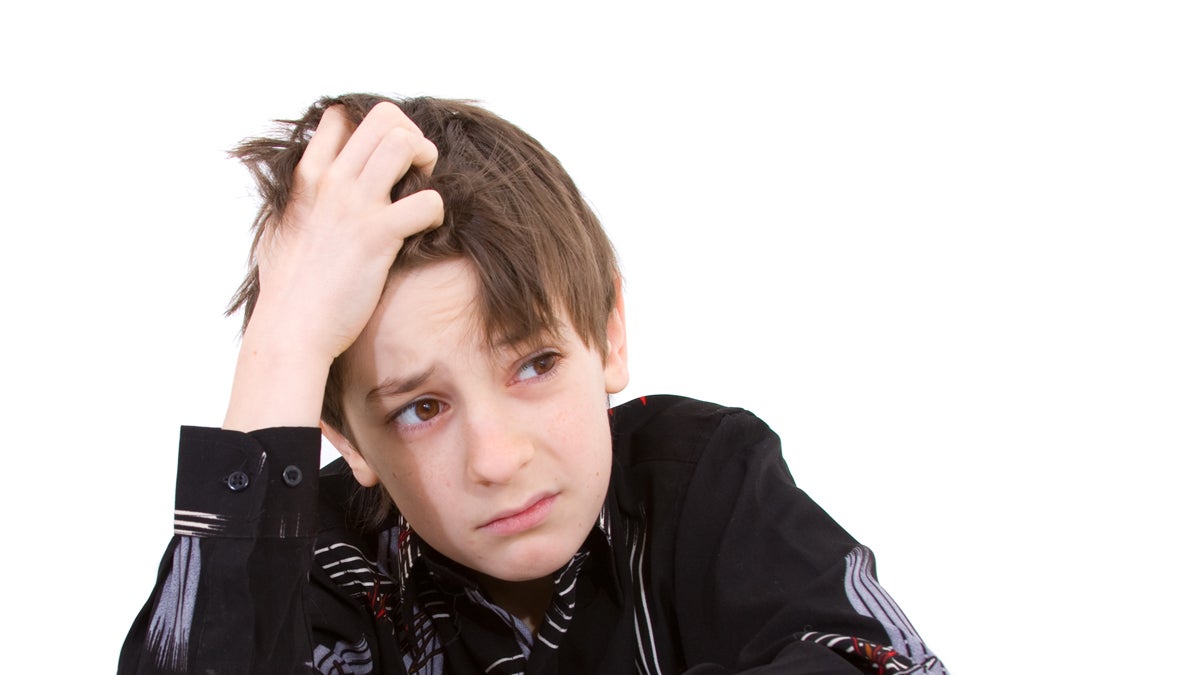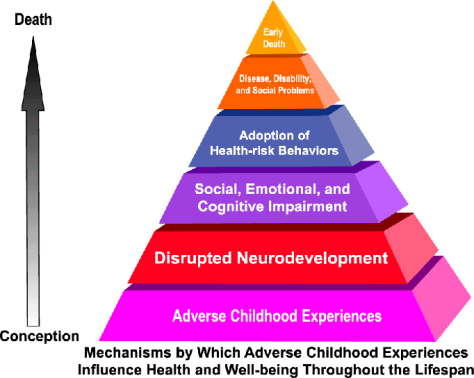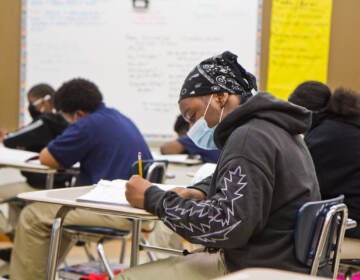To Tom Wolf: Childhood trauma is the elephant in the classroom

(Child under stress image courtesy of Shutterstock.com)
An open letter to Gov. Wolf and Education Secretary-designee Rivera regarding injured, marginalized children in Pennsylvania schools affected by trauma.
Dear Gov. Tom Wolf and Education Secretary-designee Pedro Rivera:
I write regarding injured, marginalized children in Pennsylvania schools, to ask that you include them explicitly in a broad, “Healthy PA” paradigm in your new administration.
I am an educator serving children in elementary and middle school classrooms in my own neighborhood in a major urban center for 14 years. I advocate today regarding an aspect of education rarely discussed, but clearly visible to experienced classroom educators.
Childhood trauma is a tragic, life-changing assault on the minds and lives of children in our schools. Unaddressed (which is the general, present state), its ravages continue, life-long. This applies to all neighborhoods in Pennsylvania.
Childhood Trauma is not “poverty.” It is a response of overwhelming, helpless terror to events some call “adverse childhood experience” (ACE). It can result when adults who are supposed to love and protect, instead, cause hurt: physical, emotional and sexual abuse; physical and emotional neglect; single-parent homes (because of separation, divorce, incarceration); violence; community violence; substance abuse; and mental illness. When a child is dealing with chronic ACEs in three or more categories, the impact can be devastating personally. It is powerful and shockingly prevalent.
We won’t have a successful education paradigm, or even accurately interpret academic results, until we explicitly confront trauma’s overwhelming impact.
Childhood trauma in our education system
The intersection of our educational system with childhood trauma is the most accessible and immediate aspect of this heartbreaking scourge. Dealing first with childhood trauma in education is analogous to putting the customer and the customer’s needs first in business. Dealing with childhood trauma is a prerequisite to understanding our education results. Understanding results, in turn, is a prerequisite to interpreting our many “reform” efforts with curriculum, pedagogy, and assessment, as well as training and retention of staff.
Then, understanding the childhood trauma variable is crucial for accurate reflection about effective education investment in Pennsylvania.
Successful, trauma-competent schools require consistent, system-wide training and response. Conversely, I can assure you from hard experience, with scars, that attempting to “educate” first, without understanding and without dealing with the neurobiological impacts of childhood trauma is exactly like putting the cart before the horse.
It is crucial to explicitly deal with this “elephant” before we can clearly see and interpret classroom results related to any other reform or investment.
The power and the prevalence
Childhood trauma has the power to literally change children’s brains, as well as their cognitive and social functioning and ultimately their life trajectories. The neuroscience is clear. Childhood trauma connects directly to education via its toxic stress effects on brain development. When children live in an unresolved chronic, traumatic state of survival, the toxic stress damages the function and structure of their young, developing brains. These injuries relate specifically to the prefrontal cortex and academic processes, especially crucial executive function, memory and literacy. The physiological process also leads kids to distorted perceptions of social cues, which alter their social behaviors in response. Eminently logical defenses in the midst of trauma (hyper-vigilance, dissociation) become ingrained habits, and then destructive once the threat is extinguished, but the defense pattern remains.
The prevalence is stunning! Childhood trauma affects 20 percent to 50 percent of children impacted by three or more categories of adverse childhood experience — a prevalence greater than among English language learners and students with learning disabilities (in some urban locations a prevalence greater than both combined). Researchers define the scope of childhood trauma as massive, “an epidemic,” or a “national crisis,” particularly in urban areas.
Findings from public health research are compelling. The groundbreaking “Adverse Childhood Experiences (ACE) Study” by Felitti and Anda/CDC found a “strong correlation between the extent of exposure to childhood ACEs and several leading causes of death in adulthood, including depression, heart disease, liver disease and stroke.”
 Source: Centers for Disease Control and Prevention, National Center for Injury Prevention and Control, Division of Violence Prevention
Source: Centers for Disease Control and Prevention, National Center for Injury Prevention and Control, Division of Violence Prevention
This was a huge, quantitative study lasting several years, involving more than 17,000 participants. Ultimately, CDC researchers found that roughly one-fourth of suburban, middle-class, mostly white, working folks with medical insurance had experienced three or more ACE injuries!
The number is significant, because experiencing three or more ACEs correlates with doubled risk of depression, adolescent pregnancy, lung disease and liver disease. It triples the risk of alcoholism and STDs. There is a five-fold increase in attempted suicide. It doesn’t just go away. Later, if unaddressed, it results in work absenteeism and lost productivity as measured in billions of dollars.
The classroom challenge is even bigger than the incidence of ACEs. The crisis impacts all the children in the same classroom: When you experience the classroom dynamics and disruptions from one anxious or angry, trauma-impacted child, triggering another trauma-impacted child, who attacks a third child trying to work. The epidemic diverts teaching and learning focus for 100 percent of the classroom. It dramatically clouds our understanding of academic results. (I wrote a much more detailed anecdotal narrative called “Danny goes to school.”) Partly because of its prevalence, Pennsylvania is dangerously close to “normalizing” childhood trauma impacts in our public schools.
The children are not bad or sick; they are injured. At best they are invisible in the data and analyses. At worst they mislead our interpretation of the data and resulting prescriptions. Presently, attempts to analyze data all miss the massive scale of childhood trauma injuries completely. (Try asking for ACE-adjusted, education data.) Pivotal decisions are then based on these flawed analyses.
Sadly, Childhood trauma is still “the elephant in the room.” Unrecognized or unacknowledged and unresolved, it obstructs education efforts and destroys lives.
You can be game changers
Use your positions as governor and education secretary to flood a spotlight on “the elephant in the room.” Help grow awareness. Expose trauma’s classroom impacts on a broad base, across our state, via all of your communication tools.
To the extent that monies can be allocated, or exhorted, the next priority beyond awareness would be to invest in rapid, broad training for all educators.
Construct a new level of close coordination between medical, educational and social-services professionals for our state. This means screening children as they enter our schools, clearly a potential hub of neighborhood-based access. Then providing cognitive and social supports as explicit, statewide priority — essentially the “community school” concept, but with a specific goal of addressing complex childhood trauma.
Eventually children themselves should be taught “self care” for trauma impacts as part of health and/or social studies curricula.
Ensure that data is fairly gathered and clearly presented for variable trauma impacts.
You are probably ahead of me in seeing much broader benefits as a longer term legacy for Pennsylvania and even for our nation. We have a choice to address the power and prevalence of childhood trauma, while children are still developing. It’s a siren call to lead now, to address trauma explicitly in childhood, when healing can happen more quickly, neurologically and academically, which in turn will lead to better social and financial productivity for our state in adulthood.
Thank you for making education a priority and thank you for giving educators a voice.
—
Daun Kauffman is a veteran educator in North Philadelphia.
WHYY is your source for fact-based, in-depth journalism and information. As a nonprofit organization, we rely on financial support from readers like you. Please give today.





